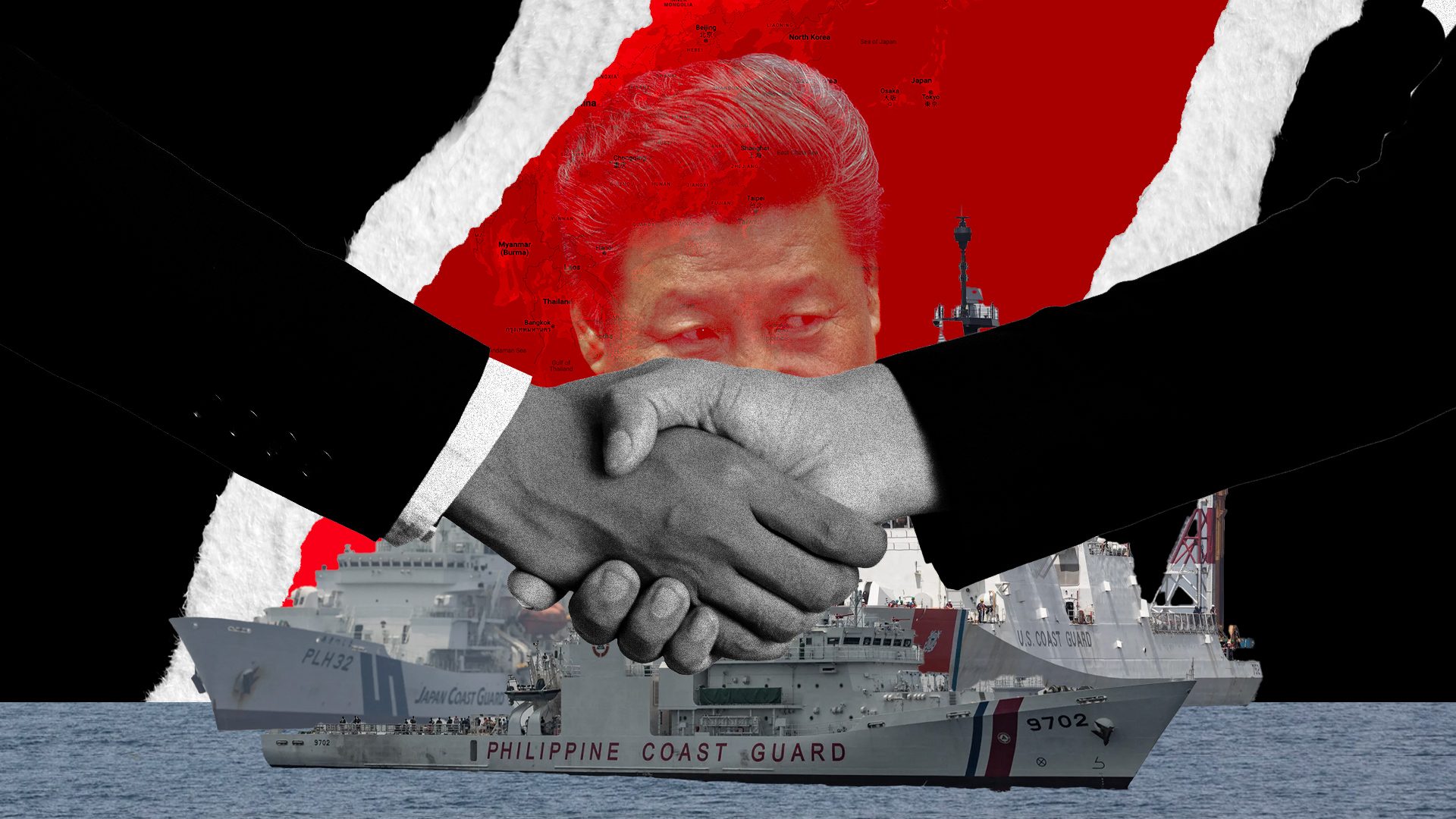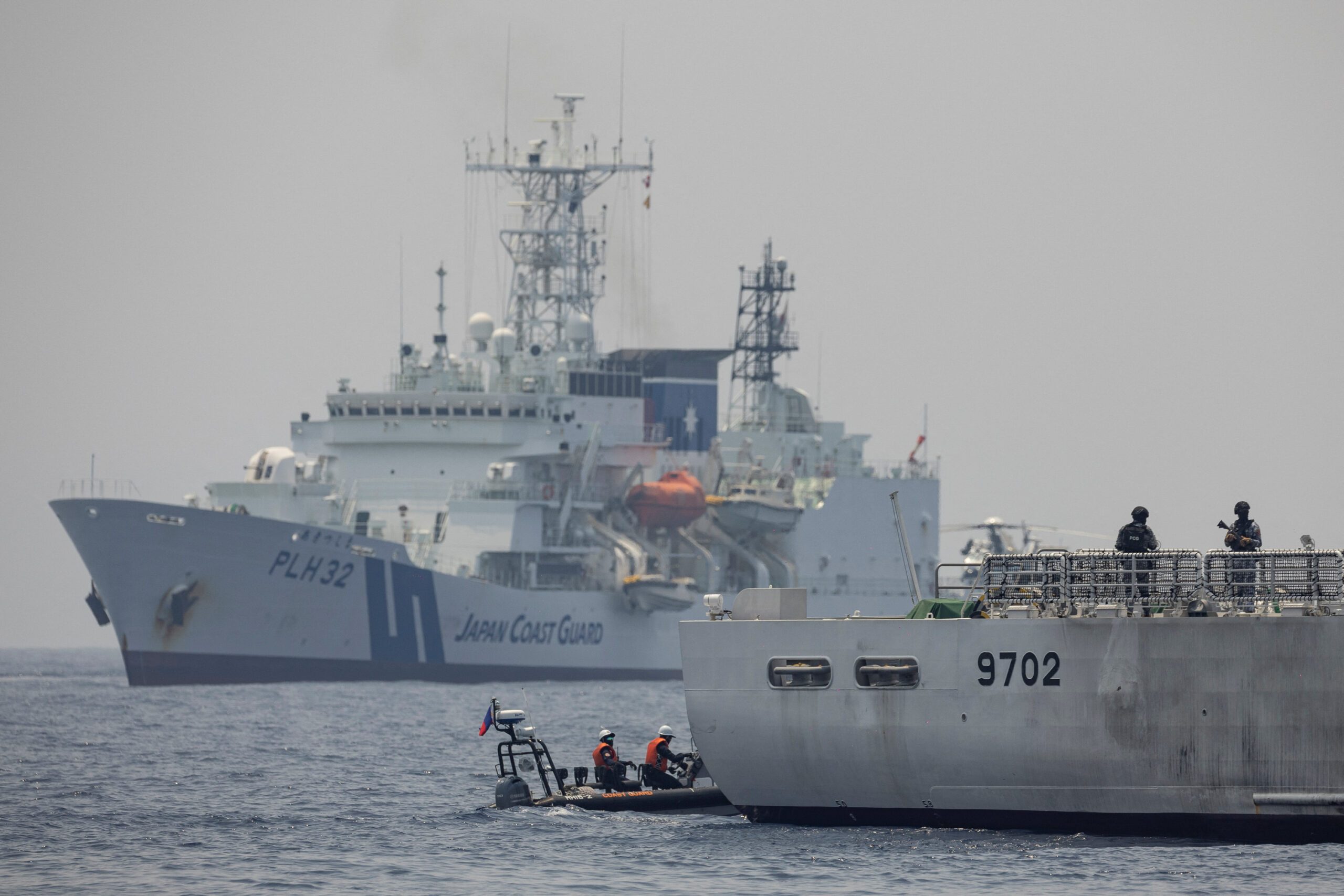SUMMARY
This is AI generated summarization, which may have errors. For context, always refer to the full article.

Last week, the coast guards of the Philippines, Japan and the United States got together in the shimmering blue waters off the coast of Mariveles in Bataan for joint exercises, the first-ever drill held by the three countries. The weeklong event, dubbed Kaagapay (standing side by side), included three vessels from the Philippines and one each from the US and Japan.
It was a show of interoperability, that favorite word. Simply put, it is the ability to work together seamlessly in fields like maritime law enforcement, search-and-rescue operations, and humanitarian and disaster relief assistance.
Kaagapay, with videos and photos of the ships gleaming in the merciless sun and uniformed men and women of three nations simulating scenarios, was a highly visible demonstration of how a trilateral alliance works, surging the momentum in maritime cooperation.
Many of us may not be aware but a number of tripartite defense activities had already taken place. Kaagapay is the latest and most heralded.
In October 2019, two back-to-back exercises were held, without fanfare, in the Philippines. First, the navies of the three countries conducted sea and shore drills off Palawan. While it was the third iteration of Sama Sama, a maritime exercise “to promote regional security cooperation, strengthen maritime partnerships, and enhance maritime interoperability,” it was the first time for Japan to participate, which sent a team from its Maritime Self Defense Force.
What followed was an amphibious exercise of the Philippine Marine Corps, Japan’s Ground Self Defense Force (JGSDF), and the US Marines called KAMANDAG. It is the acronym for Kaagapay Ng Mga Mandirigma Ng Dagat (Cooperation of Warriors of the Sea).
At the time, the Philippine Marine Corps launched their assault amphibious vehicles (AAVs) for the first time alongside US and JGSDF AAVs for a “multilateral amphibious landing.” KAMANDAG was designed, among others, to enhance partnership and smoothen interoperability between the Philippine, Japanese and US forces.

Quiet and quick
It appears that the pandemic halted the trilateral exercises. It was only in September 2022 when things started to pick up. Quietly, the first Japan-Philippines-US trilateral defense policy dialogue was convened. It was a virtual event attended by mid-level officials from the defense departments of the three countries.
A statement from Japan’s Ministry of Defense said they exchanged views on maritime security challenges with an “emphasis on the importance of upholding freedom of navigation.” The three officials also discussed possible areas of cooperation in maritime security, cyber security, information sharing, and humanitarian assistance and disaster response.
The Japanese delegation was led by Jun Miura, director general for international affairs of its Bureau of Defense Policy. Marita Yoro, director of the Office for Strategic Assessments and International Affairs of the defense department, headed the Philippine participants. The US delegation was led by Lindsey Ford, deputy assistant secretary of defense.
A few months later, in December, as travel restrictions eased, the chiefs of the land forces gathered in Japan for their inaugural meeting: JGSDF Chief of Staff Gen. Yoshida Yoshihide, US Army Pacific Commanding General Gen. Charles Flynn, US Marine Corps Forces Commander Lt. Gen. William Jurney, Philippine Army Commanding General Lt. Gen. Romeo Brawner Jr., and Philippine Marine Corps Commandant Maj. Gen. Charlton Sean Gaerlan. They exchanged views on cooperation of land forces “to deter unilateral attempts to change the status quo.”
Their next meeting took place last April, after the conclusion of the Balikatan in Manila. This time, three of the ground forces chiefs met—Gaerlan, Jurney and Maj. Gen. Shirakawa Norimichi, director general of policy and programs, JGSDF—to talk about future cooperation including “sharing best practices in intelligence, surveillance and reconnaissance; crisis response planning; and force modernization efforts.”
‘No other option’
The public rhetoric came later. These activities happened ahead of Marcos’s and Biden’s statements about establishing trilateral modes of cooperation with Japan during the Philippine president’s visit to Washington in May. Earlier, after Marcos met Prime Minister Fumio Kishida in Tokyo in February, Marcos talked about a trilateral defense agreement with the US and Japan.
I asked Kunihiko Miyake of the Canon Global Institute for Global Studies, a think tank, where these trilateral arrangements are headed for. Do they an alliance make?
“The objective is not the alliance. The alliance is the result of the need to cope with the new geopolitical environment surrounding East Asia,” he told me over a lunch interview in Tokyo, discussing how the East China Sea and the South China Sea are becoming Chinese seas. “There is no other option. No single country can do it alone. Like-minded countries should get together.”
The various forms of security cooperation among the three countries are part of shoring up deterrence, said Miyake, to “send the right message to China, that they will lose more than they gain.”
Japan, which has had a strong history of pacifism, has realized that they have to be strong to defend themselves. After all, as Miyake put it, an “alliance helps those who help themselves.” – Rappler.com
Add a comment
How does this make you feel?
There are no comments yet. Add your comment to start the conversation.